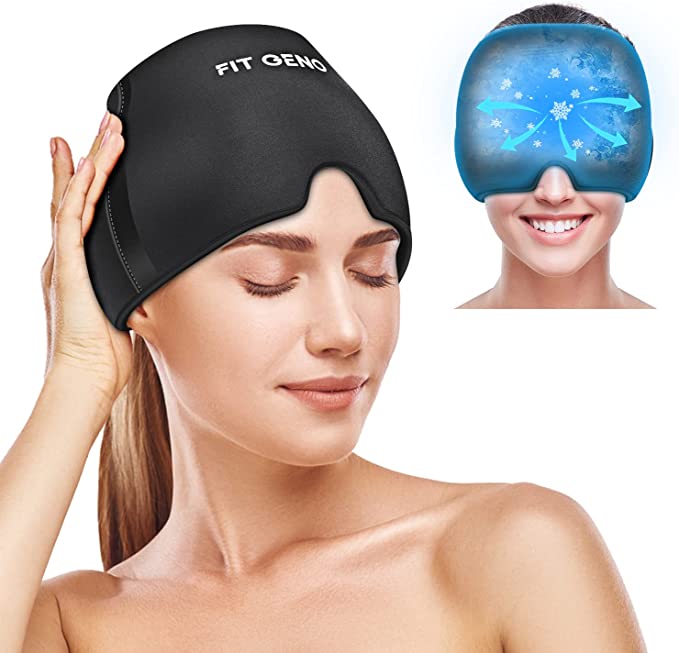Headaches can be extremely debilitating, affecting our productivity, mood, and overall quality of life.
Headaches can be caused by a variety of reasons, but one factor that is often overlooked is poor posture. What we may not realize is that our lifestyle has a huge impact on the frequency and intensity of our headaches. Whether we’re hunched over desks or constantly craning our necks to look at screens, these habits can create muscle imbalances and strain the neck and upper back. This misalignment can lead to chronic tension and discomfort, leading to more frequent and severe headaches.
By acknowledging the role of posture in the development of headaches, we can take proactive steps to improve our alignment and break the cycle of pain.
bad posture situation
The neck and upper back play a vital role in maintaining proper posture. When these areas are misaligned, it can result in a forward head posture, where the head protrudes forward in front of the shoulders. This forward shift puts undue stress on the muscles, ligaments, and joints in the neck and upper back, leading to chronic tension and discomfort.
One of the culprits of bad posture is our modern lifestyle. With the rise of sedentary desk work and widespread use of electronic devices, many people are hunched over long hours staring at screens, often with their heads down. This prolonged posture can create muscle imbalances, weaken the supporting structures in the neck and upper back, and increase the likelihood of tension headaches and migraines.
Rounded shoulders further exacerbate the relationship between poor posture and headaches. Rounded shoulders occur when the muscles in the chest and front of the shoulders tighten, pulling the shoulders forward and causing a hunched appearance. This hunched position puts extra stress on the neck and upper back, causing muscle tension and restricted blood flow. Thus, impaired circulation can trigger headaches and exacerbate their symptoms.
Ways to Improve Posture and Relieve Headaches
Fortunately, there are a few things you can do to improve your posture and relieve headache symptoms:
Ergonomic adjustment
Make sure your work environment is ergonomic. Adjust the height of your chair, desk, and computer screen to encourage proper alignment. Use a chair with good lumbar support, with your feet flat on the floor.
stretch and strengthen
Incorporate stretching and strengthening exercises into your routine. Focuses on exercises that target the muscles of the neck, upper back, and shoulders to promote proper alignment and relieve muscle imbalances.
take a break
Avoid sitting or concentrating on screens for long periods of time. Take a break every 30 minutes to stretch and walk around to release tension in your neck and shoulders.
mindfulness pose
Pay attention to your posture throughout the day. Check yourself periodically to make sure your head is aligned with your shoulders and that your shoulders are relaxed and pulled back. Avoid slouching or leaning forward when sitting or standing.
support pillow
Invest in a support pillow to help maintain the natural curve of your neck while you sleep. A pillow that provides adequate support can help relieve morning headaches caused by poor sleeping positions.
consider physical therapy
If poor posture and headaches persist despite your efforts, consider consulting a physical therapist. They can provide personalized exercises and manual therapy techniques to address muscle imbalances, improve posture, and reduce headache frequency.
Another option for maintaining good posture is investing in a posture corrector. Posture correctors are devices designed to provide support and promote proper alignment of the spine and shoulders.They can be worn discreetly under clothing and come in many forms such as big parantheses, straps, or shirt.
By using a posture corrector on a regular basis, individuals can train their muscles and develop muscle memory, leading to healthier posture habits over time. However, it is important to note that a posture corrector should not be used as a long-term crutch, but as a temporary aid to help develop better posture.
If you already have headaches or migraines, there are science-based alternatives to help you feel less uncomfortable, such as Migraine relief cap.

amazon
Combining the use of a posture corrector with exercises, stretches, and attention to posture awareness can provide a comprehensive approach to improving posture and reducing the incidence of headaches.
Breaking the cycle of headaches caused by poor posture takes commitment and conscious effort. By making small adjustments to your daily habits and prioritizing good posture, you can significantly reduce the frequency and severity of your headaches. Remember that it may take time for your body to adjust to these changes, so be patient and persevere.
If headache persists or worsens despite best efforts, a healthcare professional must be consulted. They can help determine any underlying causes or provide additional treatment options to help you find lasting relief.
Published by Medicaldaily.com


